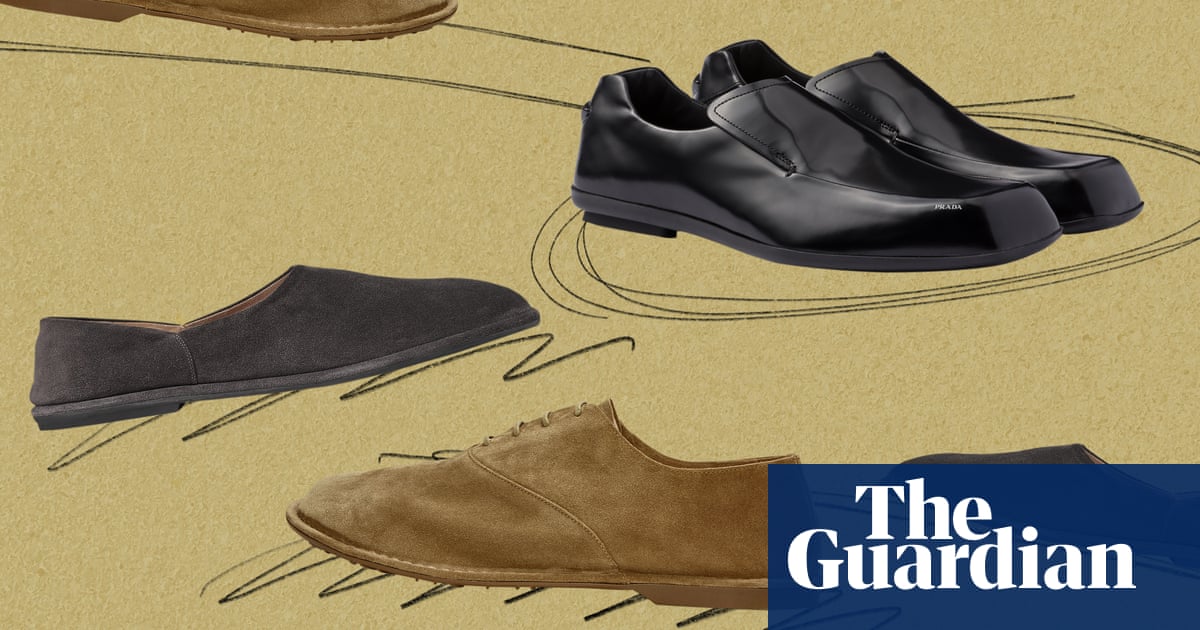
here are two bottles of Dove body wash in my home, and they are nearly identical. They have the same distinctive curved shape and flip lid, the same label, the same Unilever trademark. They differ in just one crucial way. One is 22cm tall and is designed to be used in my bath. The other measures 5.5cm – about the size of my little finger – and is a children’s toy.
My miniature bottle of Dove was hatched from the inside of a plastic egg. It is just one of 115 supermarket items that have been miniaturised by New Zealand toy company Zuru as part of its 5 Surprise Mini Brands range. A child buys a Mini Brands ball unaware what’s inside – it opens much like a Terry’s Chocolate Orange (Zuru have trademarked the toy’s “bloom open”) – and discovers five segments each housing a miniature. Among other things, you can get a teeny-tiny tin of Spam, a packet of Wet Ones wipes, some Knorr rice, a jar of Hellman’s mayonnaise, a box of Lipton tea bags and a bottle of Kikkoman soy sauce. Most of these boxes and jars don’t open – there’s just packing foam inside.
Mini Brands was launched in January 2019, but exploded in popularity last Christmas. It was the number one Googled toy in December and consequently the American grocery store Target sold out of the $10 (£8) toy online. Although Mini Brands aren’t currently available in UK stores, British customers have been buying them online for as much as £25 for a single ball. We’ve also seen a similar offering from Marks & Spencer, which launched a “Little Shop” last summer – shoppers could collect mini seeded loaves and cartons of milk. This begs the question: should logos really be slapped on children’s toys? Are miniature groceries turning kids into tiny little loyal consumers?
Heavily branded children’s toys aren’t new. In 1994, Mattel released a Barbie McDonald’s Restaurant Set, complete “with talking drive-thru” and miniature menu boards. Around the same time, ride-on toy cars for children became popular, and BMW, Jeep and Mercedes-Benz wasted no time slapping their logos on plastic bonnets. Daniel Cook, a professor of childhood studies at Rutgers University and author of The Commodification of Childhood, says: “Consumerism has been a part of children’s lives for as long as there has been modern consumption,” roughly since the mid-1800s. He references Victorian artist Kate Greenaway’s picture books of the 1880s, which had a tie-in line of clothing for girls produced by Liberty of London. He also points to Campbell’s Soup’s range of dolls, first sold in 1909.
Mini Brands is a step further, however, since the toy itself is the branded item. After cracking open a plastic orange, I find myself the owner of child-friendly mini Magnum ice-creams and, more bizarrely, a bag of Knorr four-cheese risotto. I am charmed by the mini aspect of them and yet they’re troubling, too. Isn’t shrinking everyday household products a cynical way of manipulating children into favouring a brand? Part of the appeal is that children are drawn to imitating adult life. As Cook explains, much like dollhouses, miniatures allow children to have a “mastery” of the world.
And that has huge commercial potential for so many adult consumer brands looking to expand their market.
“That sense that children might be imprinted early on with positive associations towards their product definitely drives this,” he says, “Companies want to instil their brand, their product, in children’s minds… What’s interesting about this is it’s bringing in the brand message without the product – it’s the surface.” In other words, you win the mini consumer over with the packaging first, while the content comes later.
As such, Cook says miniature items are a “cheap” and “intimate” way to get children familiar with brands – but does it actually work? The academic says that research shows children do tend to imitate their parents’ purchases when they go to university, but stresses no one can yet know whether these toys will influence kids.
“I don’t know if it works, and I don’t think they know if it works,” he says, noting that children are among the most fickle consumers. Yet, regardless of the long-term consequences, companies clearly see the toys as a worthwhile endeavour – the partnership between brands and toymakers is ultimately a financial one, and the toys undeniably make children more brand-aware.
According to author Simon Garfield, humans have always been drawn to tiny things. In his 2018 book In Miniature: How Small Things Illuminate The World, Garfield explains that minis both educate and excite us – “The miniature world embraces control,” he writes, arguing that children who play with miniatures get a taste of adult power.
In the 16th century, miniature books with microscopic text became popular. Today, one Instagram account that showcases everything from hand-crafted mini tape dispensers to mini spaghetti has nearly 200,000 followers. An array of product designers have jumped on the fad – in late 2019, French fashion designer Simon Porter Jacquemus released a minuscule handbag, its 9cm width making it too small to hold even the average mobile. In 2018, Nutella began selling mini “Nutellino” jars in supermarkets, each housing just two spoonfuls of the chocolate spread.
As well as human psychology, Mini Brands capitalises on current trends – on YouTube, “unboxing” videos favour toys with an element of surprise, while collectibles have always been a staple of the toy market. Yet the Mini Brands craze can also be explained in relation to another phenomenon: the video-sharing app TikTok, which has been downloaded more than 2bn times worldwide and is very popular with kids.
Paul Solomon, CEO of Moose Toys, which makes Shopkins Real Littles (tiny versions of real products), says the range was inspired by a desire to make “things that kids can relate to and see in their everyday lives”. With the added advantage that it may well be on their own shopping list in a few years’ time.
Over Skype, seven-year-old Ava, from the west coast of America, plays with her Mini Brands and Shopkins. Her favourite Mini Brand is Bosco chocolate syrup, because she likes eating it in real life (she doesn’t like the strawberry syrup toy because she doesn’t like strawberry syrup). “I like how the boxes look real,” she says.
The adoration of all things miniature and micro – from It-bags to tiny food – is partly down to Instagram, whose followers are just as likely to be teens and adults. So it’s no surprise that 50% of Mini Brands customers are teens and beyond, not only kids. “I have received comments from younger people saying, ‘You adults are taking all the toys’,” says Veronica King, a 26-year-old from Niagara Falls who has nearly 50,000 followers on TikTok, where she shares videos of her Mini Brands.
Ava’s mum, Wells, has spent $300 on Shopkins and stores her substantial collection in clear acrylic units hanging on walls. She has nearly 30,000 followers on Instagram, where she shares her toy collection. “I thought people would be like, ‘Oh you’re totally crazy,’ but most people think it’s really cool,” says Wells, who is wearing a purple Shopkins shirt that matches her daughter’s. She adds another reason parents buy minis for their kids – they’re easy to tidy away.
Both King and Wells have received free products from companies in exchange for posting about toys online – brand director Aneisha Vieira explains that Zuru has done no TV adverts for Mini Brands but did send products to TikTokers. “We’ve garnered over 600m views,” she says. “That’s what fed the sell-through rate we saw instore. We struck gold.”
I can’t deny I’m entertained by my miniature groceries. I marvel as I compare the mini Dove to the real one. Yet as children’s toys, they are more concerning and you can’t help wondering where playtime ends and consuming begins.
Cook says it is up to parents to decide whether they’re comfortable with their kids playing with tiny branded goods. “Treat it with the degree of suspicion and concern you would have for most other things that might come into your child’s life,” he says. “Brands are in kids’ lives all the time – it would be good to have alternatives, always, so they can think of the world around them separate from particular companies.”












